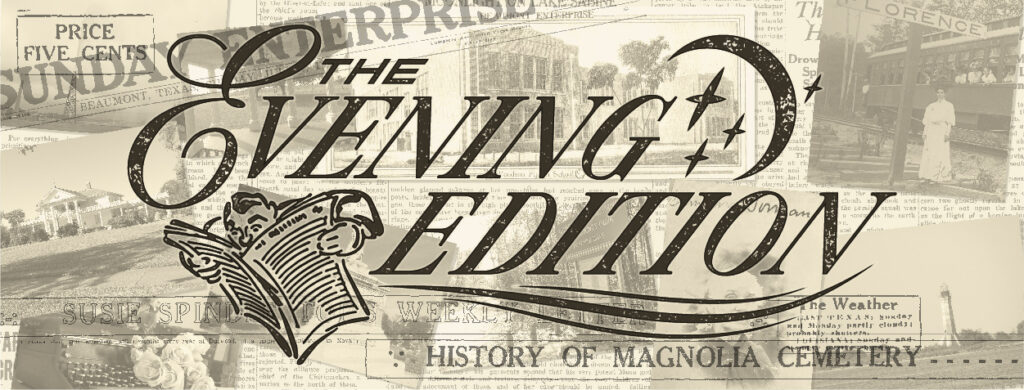
Yesterday, I returned to Sabine Pass Cemetery to visit ol’ Kate and get a few more photos of the bluebonnets engulfing Page Cemetery and a couple of other plots. The temperature was 74 degrees, and the weather was perfect, unlike last week, when temperatures topped out at 54 degrees and a cold wind and drizzle affected the survey. What a difference a week makes in SETX. I was also there to photograph the Page Cemetery stone to send to the Historical Commission to verify that it is “Page” and not “Pace,” as stated in the records. I guess Google needs to update its maps as well. It’s “Cemetery Road,” not “Pace Cemetery Road.”
Speaking of roads, I don’t think I’ve mentioned anything about the new road that heads to Sabine Pass. They built it further inland and away from the ship channel. While it’s very nice, I must say it has a few dips, and I was airborne a few times—but I digress.
After my trip to Sabine Pass, I high-tailed it to Beaumont for the Beaumont Municipal Airport Fly-In. I thought it was an excellent event and will certainly be back there for other events. A couple of things caught my eye. The first was the Vultee “Valiant” BT-13. There are few of these trainers left because most were sold for parts for crop dusters. It’s a beautiful plane, and the pilot/owner was a wealth of knowledge about the history of his Valiant. I’m glad he decided to fly in, as he said that he wasn’t really planning to be there but changed his mind when he saw his plane in the Fly-In advertisement. “I guess that if they make you Miss March on the cover, you ought to show up.”
Another gem at the Fly-In was the Nanchang CJ-6A Chinese trainer. I’ve never seen anything like it. Sorry to geek out with World War II aviation talk, but it looked like someone took a fuselage from a Nakajima B5N2 “Kate” and the wings of a Vought F4U Corsair and put them on a three-wheel cart. It’s gorgeous, and the pilot/owner loves every minute of flying it. Another odd thing I had never seen before was the three pegs sticking out from the top of the wings and in front of the plane near the nose. These were used to tell the pilot and trainee that the wheels were down. In the air, when the wheels were retracted, the pegs slide into the wings and fuselage to show the crew that they were up.
There were a few other vintage planes and two helicopters at the show, but most planes were a hodgepodge of civilian aircraft enticed by the cheap fuel. Some of these could also be called vintage, or they at least looked the part. But the highlight, at least for me, was when the T-6 Texan landed. She is a beauty. As you may have figured out, I love planes of this era, and the Texan is high on my list because it was the last trainer for pilots. After you graduated from flying this gem, your options as a newly certified killer of the skies were endless—that is, until you come across some guy with a clipboard helping his buddies get the good planes, while leaving you in a lottery with all the other new pilots. I base this statement on Ken Thomas’s reflection of his time flying a P-47 Thunderbolt in World War II. His story is told on the Warrior Next Door podcast. If you want to hear a great oral history story, check out the link at the bottom.
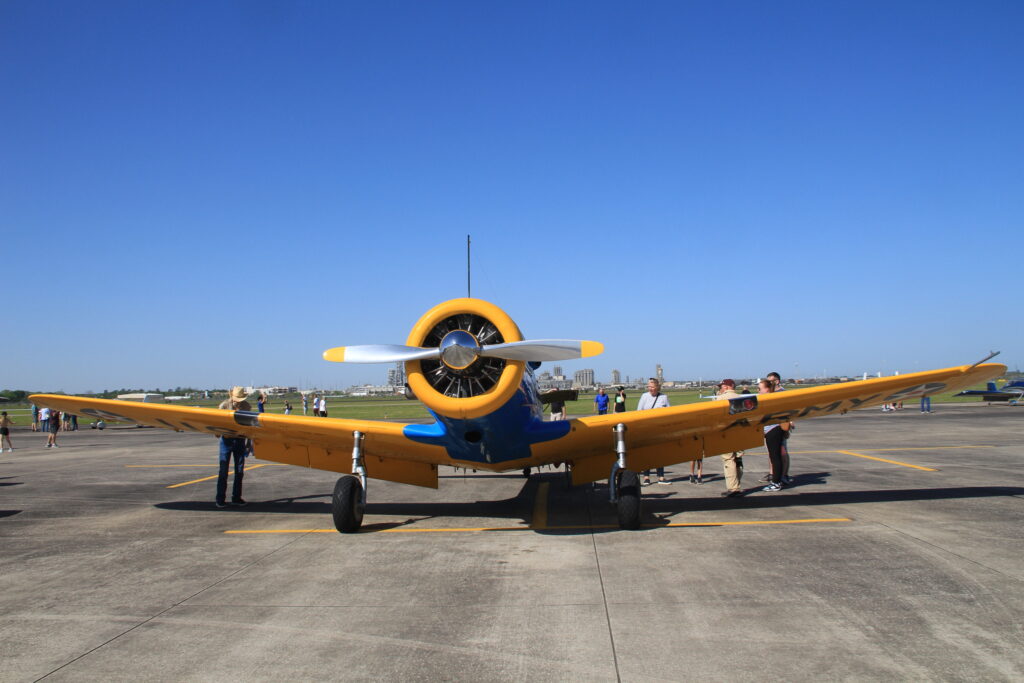
Well, that’s about it for this extra edition. I believe that everyone was happy yesterday. Kate with her new bow, me looking at the vintage planes, pilots getting cheap fuel, and Beaumont Municipal Airport enjoying the turnout from the event. I assume that the only ones ticked off were the people on I-10 westbound, as when I passed them, they were backed up in Beaumont; however, when I talked to the Valiant pilot, he said he had flown over I-10, and it was backed up to the Anahuac bridge. I-10 and TxDOT are the devil.
The Warrior Next Door Podcast: https://www.thewarriornextdoor.com/ken-thomas

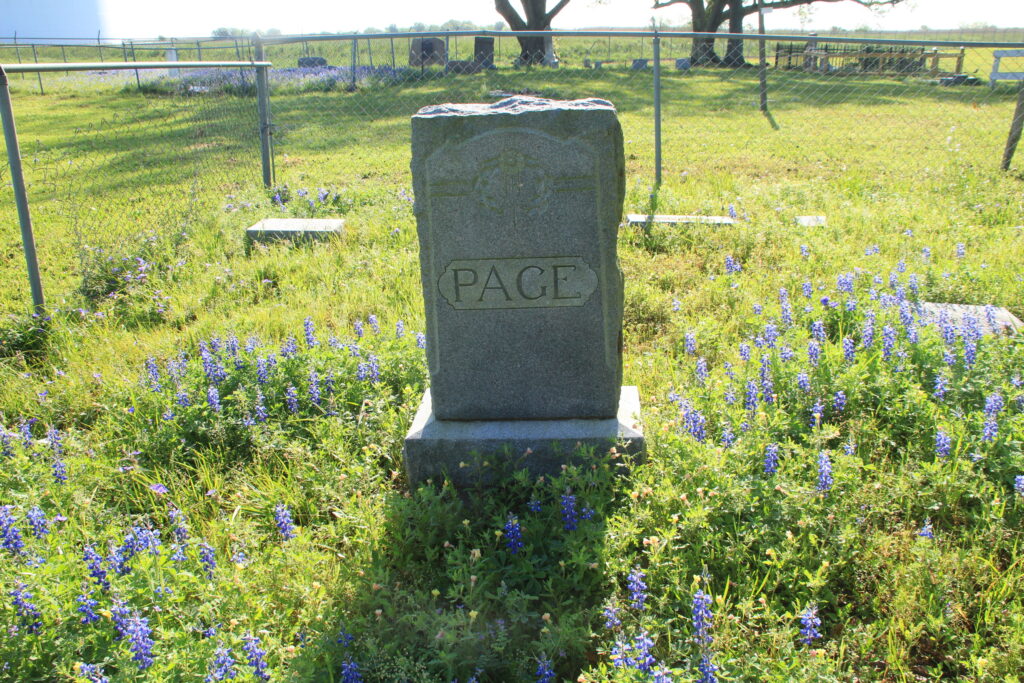
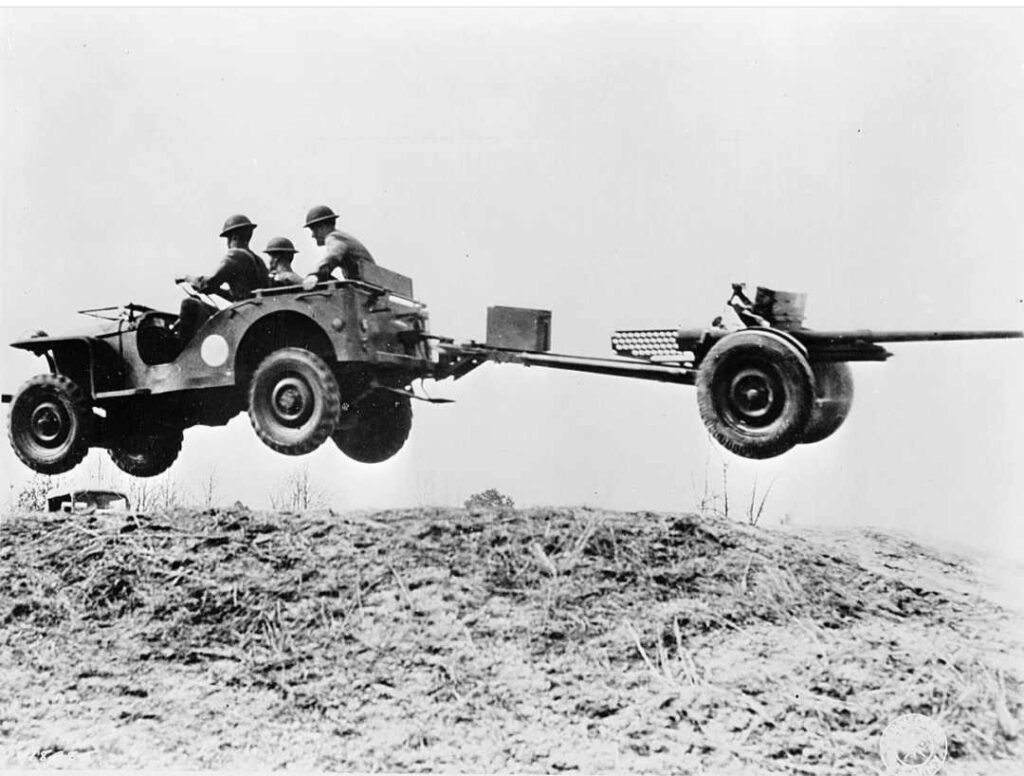
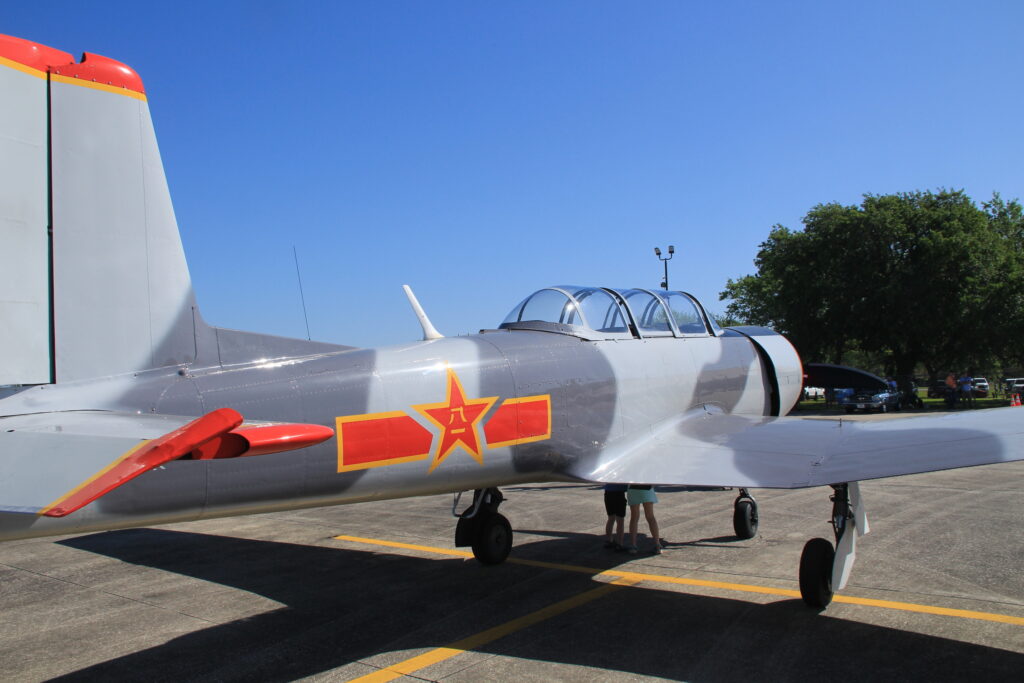
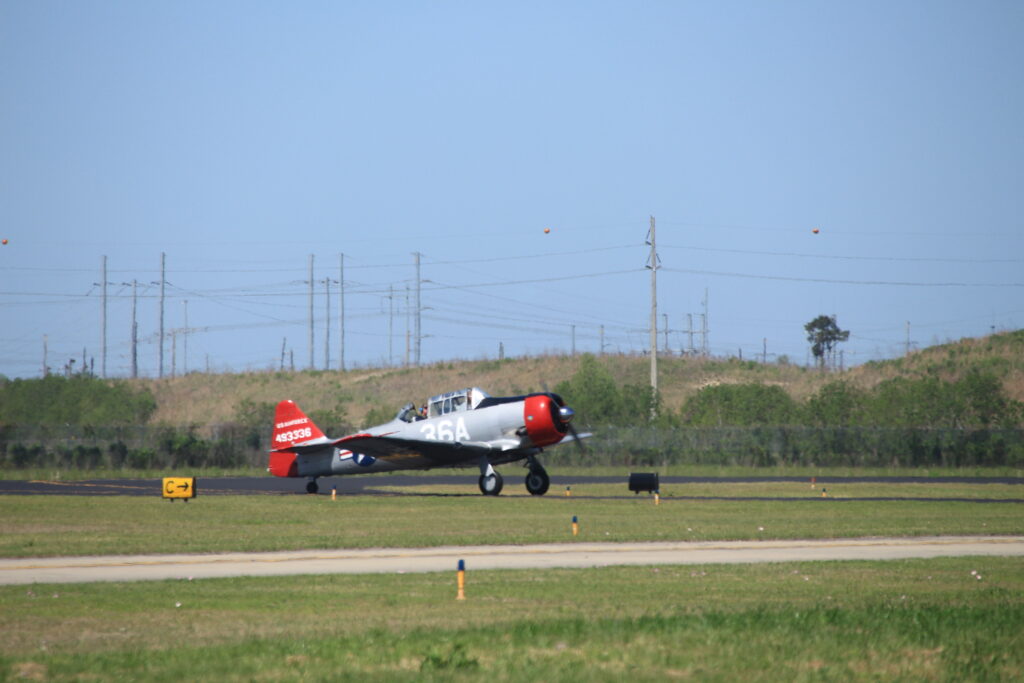
You must be logged in to post a comment.